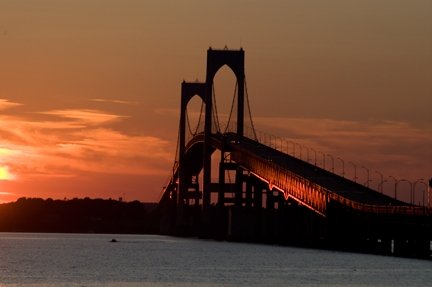The first, and possibly the part of the trinity with the greatest effect on the final image is the lens aperture.
Each model lens has a different minimum and maximum size aperture, usually referred to by a decimal number, sometimes following a lower case f; like f2.8. The first image is a lens with an aperture adjustment ring, like I mentioned in my last post. The second is a newer lens built strictly for digital cameras, on which such manual controls are obsolete.
 |
| traditional, manual aperture control |
 |
| new style, digital only lens |
The number is referring to the size of the opening in the lens. It's actually inversely related to the length of the lens. In the case of my 85mm lens, the largest aperture is f1.4 so its diameter is 1/1.4 x 85, or 60.714 mm. None of this is necessary to know.
The size of the hole is controlled by a group of leaves that open and close based on the setting. The shape of the leaves can also affect the price of the lens- lower end lenses will typically have a straight profile, where higher end ones will sometimes have both more and curved leaves, creating a more circular aperture.
 |
| aperture wide open |
 | |
| same lens as above with its aperture at its minimum setting |
Usually, more expensive lenses will also have larger maximum apertures (usually referred to as "faster," or “brighter”). This comes in handy for the ability to hand hold (not use a support like a tripod) a decent exposure without having to use a flash, and also the depth of focus, which I'll get to shortly.
Several years ago, I was doing a lot of work with local musicians, usually at live performances. At the time I was using a lens common to the off the shelf kits- a zoom telephoto lens with a maximum aperture of f4-5.6 (it varied based on how far I had zoomed in). The lens itself is decent; but with the extremely low light levels, it was difficult at best to get a decent exposure. When hand holding long exposures, you always run into a problem with you moving; and when photographing living subjects (people, pets, etc....), they will move as well. In contrast, I've done some similar work with newer, faster lenses recently, and found it much easier to get a decent shot due to the availability of more light.
Besides allowing for a shorter shutter speed, the size of the aperture also has a huge effect on the depth of space that's in focus. Don't worry, I'm not going to get into the physics behind this trick, I'll just give a couple examples.
In the image on the left (forgive me, but for a frame of reference, you'll be seeing this same series of shots several times), I shot the chessboard with the lens wide open, at f1.4. Notice the fact that most of the frame is progressively more out of focus, both toward and away from the camera, with just an extremely short section that's in focus- right at the knight's ear. The right image was taken with the same lens, except that the aperture was what I call "slammed shut," at the smallest setting, in his case f16. Much more of the frame is now in focus, including the back edges of the poorly assembled background. The larger out of focus area comes in handy when you want to bring attention to only a small portion of the scene, but one has to be careful, because it's very easy to reduce the depth of focus too far, like in the second photo. I was focusing on the moth’s mouth area, but the front of the head is completely out of focus.
Another thing to keep in mind is that at the widest and smallest settings, even the "best" lenses on the market lose sharpness. One advantage they have is that the optics are almost always better, and a lens with a maximum aperture of 1.4 is natively going to be sharper at f4 than a lens with a max aperture of f4. Almost all lenses lose sharpness at their minimum and maximum settings.


